Name Richard 13th | Role Military Officer | |
 | ||
Issue Lady Margaret BeauchampLady Eleanor BeauchampLady Elizabeth BeauchampHenry de Beauchamp, 1st Duke of WarwickLady Anne Beauchamp Spouse Isabel le Despenser, Countess of Worcester (m. 1423), Elizabeth Beauchamp, Countess of Warwick (m. 1397–1422) Children Anne Beauchamp, 16th Countess of Warwick Parents Thomas de Berkeley, 5th Baron Berkeley, Thomas de Beauchamp, 12th Earl of Warwick Similar People Richard Neville - 16th Earl, Eleanor Beauchamp - Duchess, Edmund Beaufort - 2nd Duke, Isabel Neville - Duchess, Anne Neville | ||
Richard de Beauchamp, 13th Earl of Warwick, Count of Aumale, KG (25 or 28 January 1382 – 30 April 1439) was an English medieval nobleman and military commander.
Contents
- Early life
- Welsh Rebellion
- Chivalry and Pilgrimage
- Soldier of the King
- Responsibilities
- Marriages and children
- Death and Burial
- References

Early life
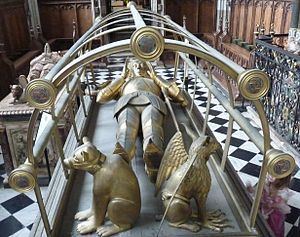
Beauchamp was born at Salwarpe in Worcestershire, the son of Thomas de Beauchamp, 12th Earl of Warwick, and Margaret, a daughter of William Ferrers, 3rd Baron Ferrers of Groby. His godfather was King Richard II.
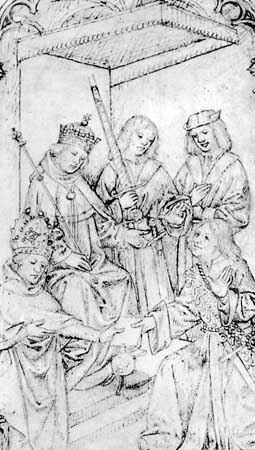
He was knighted at the coronation of King Henry IV and succeeded to the Earldom of Warwick in 1401.
Welsh Rebellion

Soon after reaching his majority and taking responsibility for the Earldom, he saw military action in Wales, defending against a Welsh rebellion led by Owain Glyndŵr. On 22 July 1403, the day after the Battle of Shrewsbury, he was made a Knight of the Garter.

In the summer of 1404, he rode into what is today Monmouthshire at the head of a force. Warwick engaged Welsh forces at the Battle of Mynydd Cwmdu, near Tretower Castle a few miles northwest of Crickhowell – nearly capturing Owain Glyndwr himself, taking Owain's banner, forcing the Welsh to flee. They were chased down the valley of the River Usk where they regrouped and turned the tables on the pursuing English force, attempting an ambush. They chased the English in turn to the town walls of Monmouth after a skirmish at Craig-y-Dorth, a conical hill near Mitchel Troy.
Chivalry and Pilgrimage
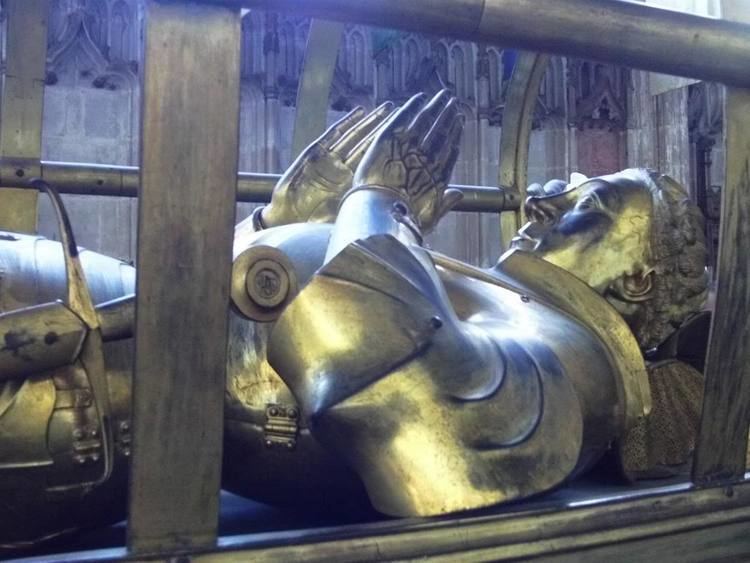
Warwick acquired quite a reputation for chivalry, and when in 1408 he went on pilgrimage to the Holy Land, he was challenged many times to fight in the sporting combat which was then popular. On the return trip he went through Russia and Eastern Europe, not returning to England until 1410.
Soldier of the King
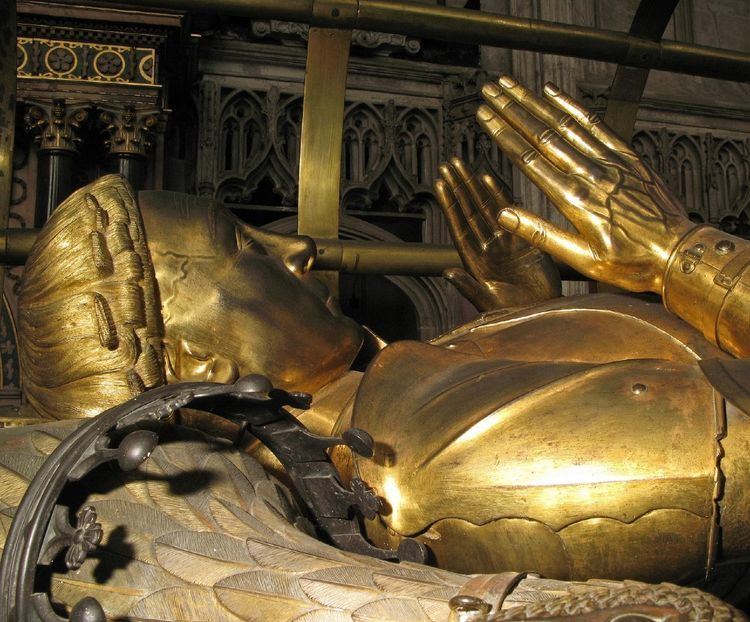
In 1410, he was appointed a member of the royal council and in 1413 was Lord High Steward at the Prince's coronation as Henry V of England. The next year he helped put down the Lollard uprising, and then went to Normandy as Captain of Calais and represented England at the Council of Constance. He spent much of the next decade fighting the French in the Hundred Years' War. In 1419, he was created Count of Aumale, part of the King's policy of giving out Norman titles to his nobles. He was appointed Master of the Horse.
Responsibilities
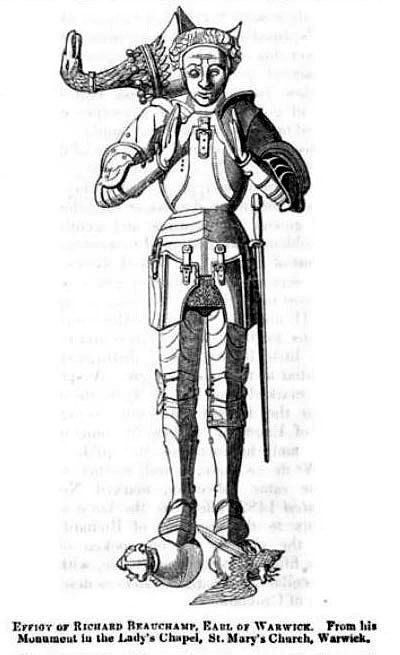
Henry V's will gave Warwick the responsibility for the education of the infant Henry VI of England. This duty required him to travel back and forth between England and Normandy many times. In 1437, the Royal Council deemed his duty complete, and he was appointed lieutenant of France and Normandy. He remained in France for the remaining two years of his life.
Marriages and children

Warwick first married Elizabeth de Berkeley (born ca.1386 – 28 December 1422) before 5 October 1397, the daughter of Thomas de Berkeley, 5th Lord Berkeley and Margaret de Lisle, 3rd Baroness de Lisle. Together they had 3 daughters:
Warwick then married Lady Isabel le Despenser (26 July 1400 – 1439), the daughter of Thomas le Despenser, 1st Earl of Gloucester and Constance of York. With Isabel, who was also the widow of his cousin Richard de Beauchamp, 1st Earl of Worcester, his children were:
Death and Burial
Richard de Beauchamp's will was made at Caversham Castle in Oxfordshire (now Berkshire), one of his favoured residences, in 1437. Most of his property was entailed, but with a portion of the rest the will established a substantial trust. After his debts were paid the trust endowed the Collegiate Church of St Mary in Warwick, and called for the construction of a new chapel there. It also enlarged the endowment of the chantries at Elmley Castle and Guy's Cliffe, and gave a gift to Tewkesbury Abbey. Beauchamp died in Rouen, Normandy, two years later, on 30 April 1439. After the completion of the chapel, his body was transferred there (in 1475), where his magnificent gilt-bronze monumental effigy may still be seen.
